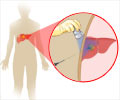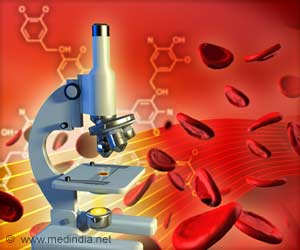Chronic inflammation tips the balance of immune cells to promote liver cancer. Chronic liver inflammation promotes cancer by suppressing immunosurveillance.

‘Adaptive immunity actively prevents liver cancer. But chronic inflammation disturbs the balance of immune cells and promotes liver cancer.’





The team used a new mouse model of liver cancer in this study. Rather than artificially triggering cancer by engineering genetic mutations, this model more closely mimics human liver cancer in that tumors develop as a natural consequence of non-alcoholic steatohepatitis (NASH), a chronic metabolic disorder that causes liver damage, fibrosis and numerous cell mutations. NASH is associated with obesity and is expected to soon become the leading cause of liver cancer in the U.S. and other Western countries, Karin said.The researchers found that NASH-associated mutations provoke the immune system, including cytotoxic T cells, to recognize and attack the newly emerging cancer cells. However, chronic liver inflammation in both mice and humans also led to the accumulation of immunosuppressive lymphocytes, a type of immune cell Karin and Shalapour first described two years ago.
In the battle between these two types of immune cells, immunosuppressive lymphocytes win -- they use a molecule known as PD-L1 to interfere with cytotoxic T cells. With the brake on T cells, liver tumors formed and grew in the chronically inflamed mice.
In mice that lacked tumor-fighting cytotoxic T cells, 27 percent of 15 mice had large liver tumors at six months. At that same point, mice retaining cytotoxic T cells had no tumors. Similarly, mice without immunosuppressive lymphocytes hardly had any tumors, even at 11 months, presumably since their absence left the cytotoxic T cells alone to do their tumor-fighting job.
"PD-L1 allows immunosuppressive lymphocytes to suppress cytotoxic T cells, but it's also their 'Achilles heel,'" said Karin, who is also the Ben and Wanda Hildyard Chair for Mitochondrial and Metabolic Diseases.
Advertisement
"These findings provide an explanation for the remarkable ability of so-called anti-PD-1 drugs, which block the receptor for PD-L1, to induce liver cancer regression," Karin said. "The first member of this class of drugs was recently approved for the treatment of advanced liver cancer."
Advertisement
Liver cancer is the second leading cause of cancer deaths worldwide. Liver cancer is caused by chronic liver inflammation driven by hepatitis B or C, alcohol consumption, non-alcoholic fatty liver disease (NAFLD), or NASH. Currently, the only available treatment is surgical removal or ablation of tumors.
The research report is published in the journal Nature.
Source-Eurekalert















